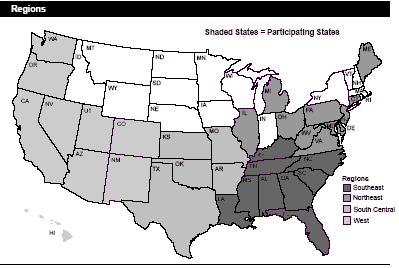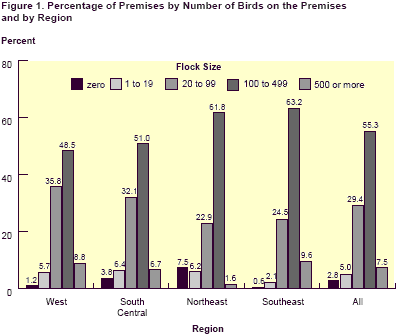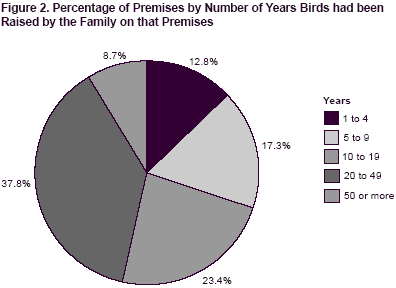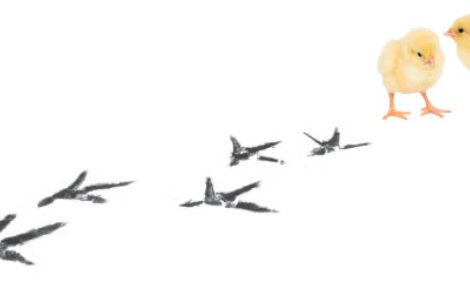



Highlights of Part II: Reference of Health and Management of Gamefowl Breeder Flocks in the United States, 2004
By The National Animal Health Monitoring System - This article is a highlight of Part II of NAHMS's study of the U.S. poultry industry.Introduction
Poultry ’04 is the National Animal Health Monitoring
System’s (NAHMS) second study of the U.S.
poultry industry. Layers ’99 was the first national
study on poultry baseline health and management.
Layers ’99 estimated the prevalence and
associated risk factors of Salmonella enterica
enteritidis in U.S. layer flocks. For Poultry ’04
NAHMS conducted a thorough assessment to
determine the information needs of the poultry
industry, researchers, and Federal and State
governments. This needs assessment indicated a
need for information regarding bird health, bird
movement, and biosecurity practices of backyard
flocks, gamefowl, and live poultry markets.
Data for Part II of Poultry ’04 were collected via
a questionnaire mailed to members of United
Gamefowl Breeders Association (UGBA) State
affiliates and to members of State associations not
affiliated with UGBA. Population estimates were
created for four regions (see map below).

Premises
Over half of premises (55.3 percent) had
between 100 and 499 birds, and 7.5 percent had
500 or more birds (figure 1). Over half of all
premises (57.0 percent) had birds that were able to
leave the property.

Health care
Overall, 18.2 percent of premises had used the
services of a veterinarian in the previous 12
months. For large flocks, more than 4 out of 10
premises (42.0 percent) used the services of a
veterinarian in the previous 12 months.
Nearly all premises (91.6 percent) obtained
some medication in the previous 12 months. The
most common source of medication was farm or
feed store, followed by mail order or Internet.
Use of injectable vitamins ranged from 46.5
percent of premises in the Northeast region to 83.1
percent of premises in the West region. Over half of
all premises (58.6 percent) vaccinated birds,
ranging from 44.8 percent of premises in the
Northeast region to 68.0 percent in the West
region. Over three-fourths of large premises
(78.3 percent) vaccinated birds.
About half of premises (47.1 percent) reported
problems in their flocks with external parasites, and
about one in four (23.9 percent) reported
respiratory problems. The majority of premises
reported that veterinary care, vaccinations, and
medications were readily available.
Bird movement
Just over half of premises (51.5 percent)
introduced new birds into the flock one or more
times during the previous 12 months, and 9.8
percent introduced new birds five or more times.
For premises that introduced new birds in the
previous 12 months, 58.5 percent obtained new
birds from within their county, and 53.4 percent
obtained new birds outside their county but within
their State. Very few premises with new birds
(1.2 percent) obtained the birds from outside the
United States.
Overall, 70.9 percent of premises had sold or
gave away live birds in the previous 12 months. For
premises that sold or gave away any live birds in
the previous 12 months, 74.8 percent did so within
their county, and 56.8 percent did so outside their
own county but within their State. Interstate sales
occurred on one-third of premises (33.7 percent).
Although obtaining birds from outside the United
States was very rare, international sales occurred
on 14.3 percent of premises that sold birds.
Two-thirds of premises (69.9 percent) took birds
to locations where other birds were present and
returned them to the flock in the previous 12
months. Nearly half of premises (44.4 percent) did
so five or more times. For premises that moved
birds, two-thirds of premises (66.1 percent) moved
birds to another State and returned them to the
flock. International movement was rare (1.6 percent
of premises).
Most premises (85.4 percent) transported birds
by vehicle at some time during the previous 12
months. Nearly all premises that transported birds
by vehicle used wooden or fine-screen containers
(92.0 percent), either exclusively (68.3 percent of
premises) or in addition to special recyclable
containers with airflow cardboard (23.7 percent of
premises). Transportation by air was uncommon
(15.1 percent of premises, overall), although over
half of large flocks (56.2 percent) had transported
birds by air in the previous 12 months.
Mortality
Overall, 8.6 percent of birds died in the previous 12 months (excluding birds slaughtered for human consumption). The percentage of birds that died decreased as flock size increased. Incineration was the most common method of dead bird disposal (43.5 percent of premises), ranging from 32.3 percent of premises in the Southeast region to 51.7 percent of premises in the South Central region. Burial on the premises was the most common method used in the Southeast region (37.8 percent).
Producer characteristics
The most common reason for having birds was
for fun/hobby, which ranked very high for 75.9
percent of premises. In addition, 65.3 percent of
premises ranked family tradition and lifestyle as
very high reasons for having birds.
Birds had been family-raised on the premises
for 20 or more years on 46.5 percent of premises
and for 50 or more years on 8.7 percent of
premises, indicating a long tradition of having birds
in these families.

Source: Animal and Plant Health Inspection Service - June 2004








